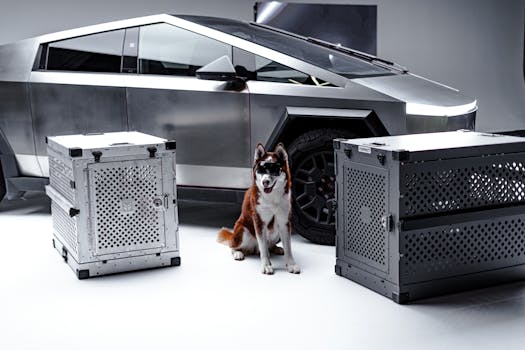The automotive industry is undergoing a significant transformation driven by digital tools. These technological advancements not only enhance vehicle performance but also improve the overall customer experience. Innovation in digital tools is revolutionizing how cars are designed, manufactured, sold, and maintained.
As vehicles become increasingly interconnected, the use of digital tools is expanding. From advanced driver-assistance systems (ADAS) to mobile applications, these innovations are reshaping the automotive landscape. It’s not just about the cars themselves but also the processes surrounding them.
This article explores the various impacts of digital tools on the automotive industry, focusing on design, manufacturing, sales, maintenance, and customer engagement. Understanding these changes helps stakeholders navigate the evolving landscape of modern automobiles.
The Evolution of Automotive Design
Digital tools have revolutionized the automotive design process. Advanced computer-aided design (CAD) software enables engineers to create highly detailed models. These models facilitate efficient collaboration among design teams.
3D printing has also emerged as a game-changer in automotive design. This technology allows for rapid prototyping, meaning designers can test concepts quickly and effectively. As a result, production cycles are significantly shortened.
Virtual reality (VR) offers designers immersive environments to visualize vehicles. By simulating real-world conditions, stakeholders can assess aesthetics and functionality before production begins. This leads to enhanced decision-making and minimal errors.
Moreover, digital twin technology allows manufacturers to create virtual replicas of vehicles. This provides insights into vehicle performance and helps fine-tune designs. Such precision is critical in today’s competitive market.
Overall, the evolution of automotive design through digital tools enhances innovation and efficiency. As a result, manufacturers produce vehicles that meet customer expectations while streamlining processes.
The Impact on Manufacturing Processes
Manufacturing processes in the automotive industry are fundamentally changing due to digital tools. Automation and robotics are now integrated into assembly lines, boosting production efficiency. These technologies also enhance precision in manufacturing.
Data analytics plays a crucial role in optimizing production lines. By tracking performance metrics, manufacturers can identify bottlenecks and improve workflow. Effective data utilization minimizes waste and maximizes output.
Internet of Things (IoT) devices monitor machinery health in real-time. This predictive maintenance reduces downtime and increases operational availability. Consequently, manufacturers save costs while extending equipment lifecycle.
Digital supply chain management has transformed how parts are sourced and delivered. Enhanced tracking and transparency foster collaboration between suppliers and manufacturers. Such advancements improve inventory control and reduce delays.
In summary, the impact of digital tools in manufacturing processes leads to enhanced efficiency and productivity. As a result, automotive manufacturers can respond swiftly to market demands.
Changing the Retail Landscape
The retail sector in the automotive industry is witnessing significant transformations powered by digital tools. Online platforms enable consumers to research and purchase cars from the comfort of their homes. This convenience is reshaping traditional dealership interactions.
Virtual showrooms enhance customer engagement by providing 360-degree views of vehicles. Prospective buyers can explore features and configurations before making decisions. This digital experience often leads to informed and confident choices.
Additionally, online financing tools streamline the purchasing process. Customers can apply for loans, calculate payments, and even sign documents digitally. Such efficiency reduces the time spent in dealerships significantly.
Social media platforms serve as vital channels for marketing and communication. Automotive brands can showcase new models, share promotions, and interact with customers in real time. This builds brand loyalty and improves customer relations.
In essence, digital tools are revolutionizing the retail landscape in the automotive industry. By improving convenience and access to information, they create a more informed customer base.
Enhancing Vehicle Maintenance
Vehicle maintenance has also been transformed through the integration of digital tools. Mobile applications allow car owners to schedule service appointments easily. These apps provide reminders and track service history, enhancing owner awareness.
Moreover, diagnostic tools receive data directly from vehicles, facilitating quicker maintenance assessments. This real-time feedback helps mechanics identify issues swiftly, ensuring that vehicles are serviced efficiently.
Remote monitoring capability allows for proactive maintenance. For instance, fleet managers can monitor their vehicles’ health, enabling timely interventions. This not only reduces repair costs but also enhances vehicle longevity.
Digital service manuals provide mechanics with immediate access to repair information. This resource reduces time spent on diagnosis, contributing to faster service for customers. Consequently, satisfaction levels increase.
In conclusion, the digitization of maintenance processes leads to improved efficiency and customer satisfaction. The automotive industry can ensure that vehicles are kept in optimal condition through these advancements.
Improving Customer Engagement
Digital tools are pivotal in enhancing customer engagement within the automotive industry. From chatbots to personalized marketing, brands can now interact with customers in meaningful ways. This fosters a more satisfying customer journey.
Customer relationship management (CRM) systems allow dealerships to manage interactions efficiently. These tools compile customer data, enabling tailored communication based on preferences. As a result, customers feel valued and understood.
Online reviews and social media feedback help automotive brands assess customer sentiment. Brands can quickly respond to concerns or praises, improving overall satisfaction. This agility strengthens customer trust and loyalty.
Moreover, loyalty programs integrated with mobile applications encourage repeat purchases. Customers can earn rewards for their engagement, enhancing brand connection. This strategy is critical in a competitive market.
Ultimately, digital tools significantly enhance customer engagement in the automotive sector. Brands that prioritize these interactions foster loyalty and build enduring relationships with their customers.
Challenges of Digital Integration
Despite the numerous benefits of digital tools, challenges persist in their integration within the automotive industry. One of the primary concerns is cybersecurity. As vehicles become more connected, protecting user data is critical to maintaining trust.
Additionally, not all consumers are comfortable with technology. The digital divide may leave certain demographics feeling alienated. Automotive companies must ensure accessibility in their offerings to cater to all audiences.
Moreover, training employees to utilize digital tools effectively can pose difficulties. Resistance to change may occur, necessitating comprehensive training programs for successful adoption. This process requires time and investment.
The rapid pace of tech development presents another hurdle. Automotive companies need to continuously adapt to emerging technologies. Keeping up with trends can strain resources and lead to strategic misalignment.
In conclusion, while digital integration offers numerous advantages, challenges remain. The industry must navigate these obstacles to fully harness the potential of digital tools.
Conclusion
The impact of digital tools on the automotive industry is profound, affecting design, manufacturing, sales, maintenance, and customer engagement. As technology evolves, so does the way vehicles are developed and marketed.
While challenges accompany these advancements, the benefits are hard to ignore. The automotive landscape is becoming more efficient, customer-centric, and innovative. Stakeholders must embrace digital tools to stay competitive.
Ultimately, harnessing the potential of digital tools will shape the future of the automotive industry. Continuous investment in technology is key to navigating this ever-changing environment.


